GEMSTONE VARIATIONS
For decades, people used the terms like precious or semi-precious to define a gemstone. However, every gem is unique and has characteristics that set them apart. The nature, chemical composition, hardness, color, and place of origin are considered while categorizing gemstones into different groups. The gems are sorted into different types, making it easier for a person to know how to wear them, when to wear them, and how to care.
Check out the list of several types of gemstones.
EXOTIC OR RARE GEMSTONES
Exotic or rare gemstones are often collector’s specimens. Such gemstones are appreciated for their unique beauty and rarity. Those looking for something exclusive, exotic, or rare gemstones will mesmerize you with their unique visual appeal, reputed healing properties, and complete rarity. Some examples of exotic or rare gemstones include:
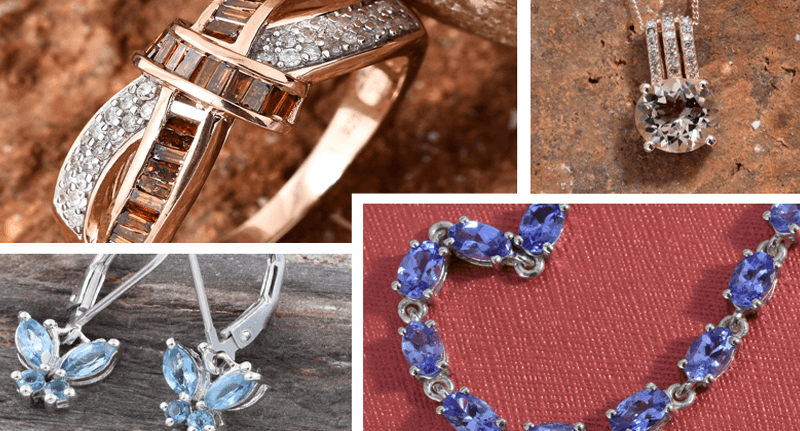
- Morganite: Impressing with its unique pink to peach color range, morganite is rare among other types of beryl gemstones due to sporadic mining.
- Aquamarine: Loved for its iconic oceanic blue-green hues, aquamarine is one of the most admired gemstones.
- Red Diamond: Rarely occurring in nature, red is one of the most unusual colors to be found in diamonds.
- Tanzanite: One thousand times rarer than diamonds, tanzanite is a single-source stone that displays an intriguing color shift.
PRECIOUS GEMSTONES
Four gemstones are categorized as precious gemstones. What makes these precious gemstones is their history. Over the ages, these stones have been revered by royalty and religious figures. They are traditionally included as gifts for unique celebrations such as weddings, anniversaries, and birthdays. The four precious gemstones are:
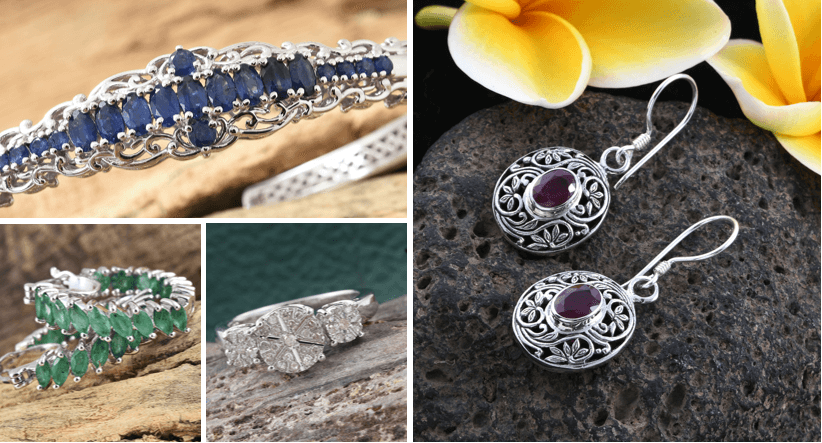
- Ruby: Cherished for its brilliant and vivid red color, ruby is the definitive precious red gemstone.
- Emerald: Loved for its lush green color, the clarity of an emerald is its most defining characteristic.
- Sapphire: Once considered the stone of heaven, sapphire captivates with its vibrant blue hues.
- Diamond: With a magical combination of structure, composition, and formation, diamond offer unique qualities that make it stand alone.
SEMI-PRECIOUS GEMSTONES
Most gemstones other than ruby, emerald, diamond, and sapphire are known as semi-precious. Such stones are typically found in more significant quantities in their natural state. The semi-precious category also includes some organic materials such as amber and pearl. Popular semi-precious gemstones have:
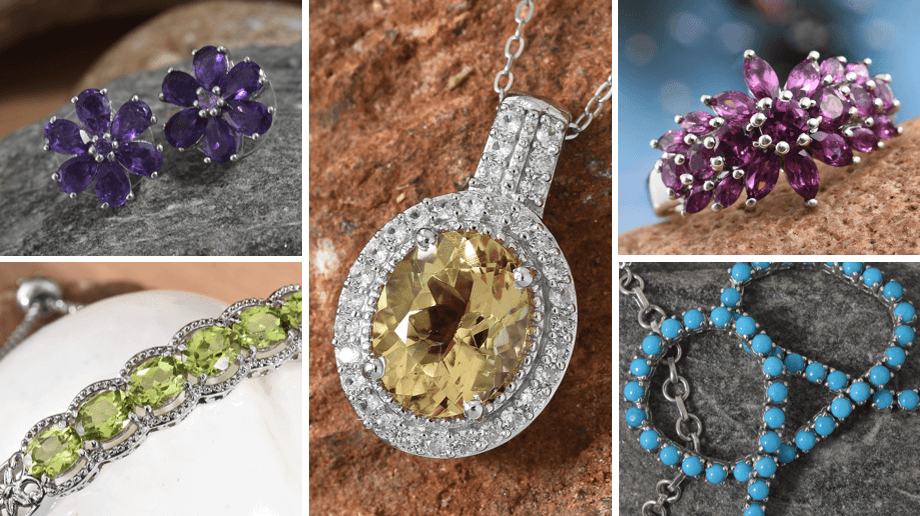
- Amethyst: Appearing in various tones from pale pink-lavender to intense royal purple, amethyst displays pleochroism.
- Citrine: Famous for its breathtaking range of hues, citrine captures the warm glow of autumn.
- Garnet: Loved for its intense velvety red hues, garnet is genuinely one of Mother Nature's little surprises.
- Peridot: Featuring an enchanting olive color, peridot captivates us with intriguing displays of sparkle.
- Turquoise: Having been revered since ancient times, turquoise always finds itself at the forefront of fashion.
ORGANIC GEMSTONES
Gemstones come from plant or animal life; living organisms produce organic gems. For example, mollusks have pearls, and amber is a by-product of tree sap. These gemstones are less durable than most minerals. Because of this, they are generally polished, carved, or drilled. Rarely are they faceted. Famous organic gems are:
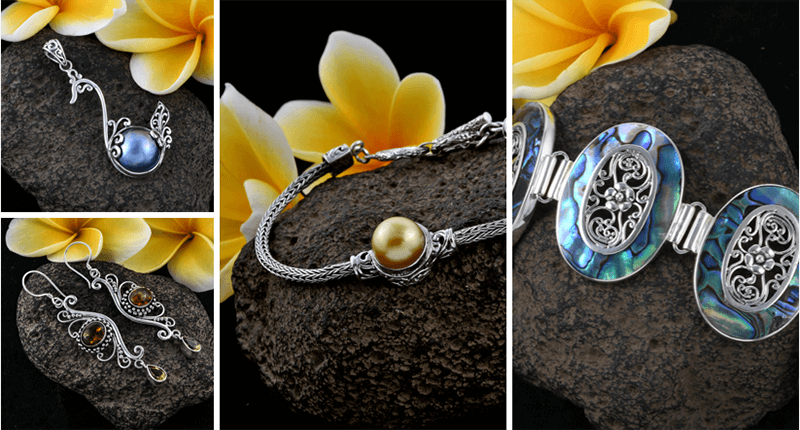
- Amber: Known as a "window to the past," amber is fossilized tree resin and frequently contains prehistoric plant material, insects, and strands of DNA.
- Abalone: Shimmering in iridescent blues, greens, and purples, abalone shell has been popular since humanity’s earliest days.
- Pearl: One of the most classic gemstones, pearl has been treasured for centuries, if not millennia.
LAB CREATED GEMSTONES
Lab-created gemstones are made under controlled conditions in laboratories to mimic the look and feel of a natural gemstone using the same chemical composition as its natural counterpart. It can be challenging to tell the difference between a synthetic or lab-created gemstone and the actual gemstone since they have the same chemical composition. Examples of lab-created gemstones include:
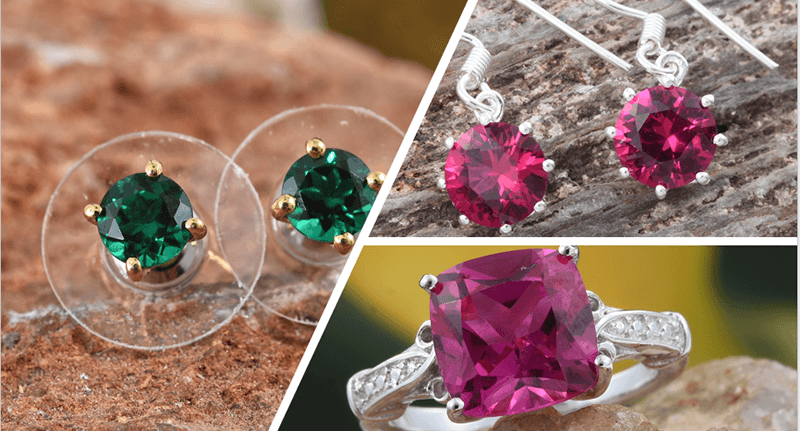
SIMULATED GEMSTONES
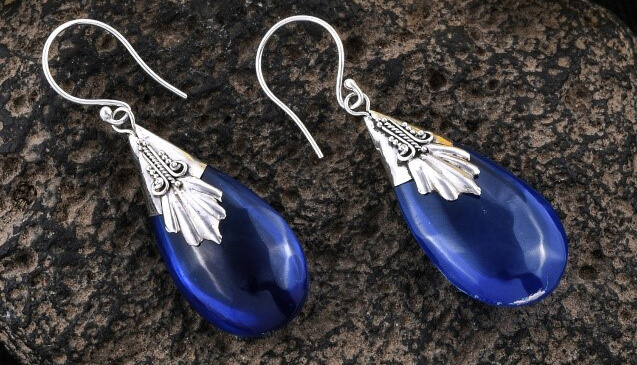
Simulated gemstones are made to match the color and look of genuine gemstones. They are made from a variety of materials. Simulated stones, such as cubic zirconia, can be created under controlled lab conditions. A simulated stone can be a stone used to imitate another. An example of a simulated diamond would be cubic zirconia. Other examples of simulated gemstones are: